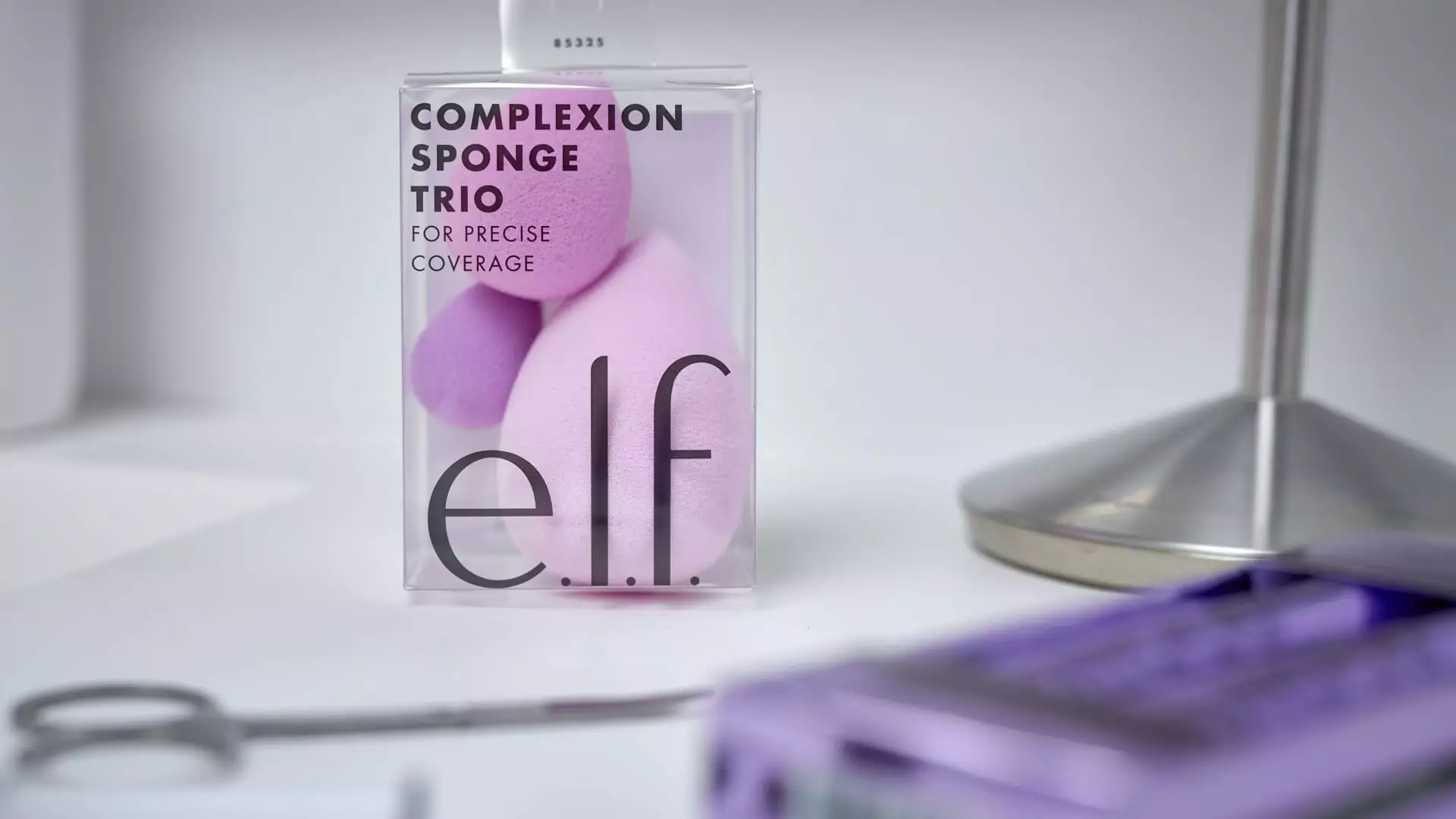E.l.f. Beauty, a prominent player in the cosmetics industry known for its budget-friendly pricing and viral accessibility, has faced unexpected challenges as it recently revised its financial outlook downwards. The company’s performance during the fiscal third quarter, particularly the dip in profits and softer sales figures in January, raises questions about its sustainability and competitiveness in a fiercely competitive market. As E.l.f. reports a 36% drop in profits, stakeholders are compelled to assess the implications of this downturn for the brand’s future trajectory.
In the company’s latest earnings report, E.l.f. revealed an adjusted earnings per share (EPS) of 74 cents, slightly below Wall Street’s expectation of 75 cents. Revenue for the quarter came in at $355 million—outpacing expectations of $330 million and reflecting a 31% increase from the previous year. However, this revenue growth could not mask the sharp decline in net income, which plummeted to $17.3 million from $26.9 million year-over-year. The disparity between rising sales and falling profits is puzzling; it suggests underlying issues that could undermine future growth if not addressed.
The guidance for the remainder of the fiscal year further complicates matters. E.l.f. is now anticipating annual sales in the range of $1.3 billion to $1.31 billion, below the previously expected $1.32 billion to $1.34 billion, illustrating a downward trend that could challenge investor confidence.
CEO Tarang Amin attributed some of E.l.f.’s challenges to a broader slowdown in the beauty sector rather than an inherent weakness within the brand itself. He noted that the overall mass cosmetics market dropped by 5% in January, potentially influenced by two critical factors: the aftereffects of aggressive holiday discounting and a decline in social engagement around beauty products. Such external pressures signify a shift in consumer behavior and market dynamics that E.l.f. must navigate carefully.
The impact of social media on beauty sales cannot be overlooked. Amin pointed out that events like the LA wildfires created an environment where people were less likely to post about beauty products, which can drastically influence sales. The uncertainty surrounding platforms like TikTok, particularly concerns regarding its sustainability, adds another layer to the challenge of maintaining consumer engagement.
E.l.f.’s supply chain predominantly relies on China, as approximately 80% of its products are sourced from the region. Recent tariff introductions pose a potential heartache for the company. While Amin indicated that the new 10% duties are not as severe as anticipated, the question of whether E.l.f. will raise prices to protect its margins remains. The brand’s ability to balance maintaining accessible pricing whilst managing increased costs will be critical as it strives to retain its loyal customer base.
Despite facing these obstacles, E.l.f. Beauty has exhibited resilience over the past couple of years, drawing a diverse range of shoppers through its strategic marketing and commitment to affordability. However, if recent product launches are failing to gain traction, the brand may need to re-evaluate its approach, ensuring it stays relevant amid evolving consumer preferences.
E.l.f. remains proactive in its strategy, as Amin highlighted the company’s commitment to investing in areas such as inventory management and international expansion. This prudent approach should equip E.l.f. to better navigate current market headwinds and pursue long-term growth.
Moreover, while the latest financial results may signal caution, the foundation that E.l.f. has built could still enable it to bounce back. If the brand can effectively adapt to the external challenges, increase consumer engagement through innovative marketing, and efficiently manage cost pressures, it has the potential to reclaim its place as a trailblazer in the beauty industry.
E.l.f. Beauty’s recent pivot in financial guidance underscores the volatility that characterizes the beauty sector. The company’s decline in profits and its need to navigate changing consumer behaviors necessitate a strategic reassessment. Although challenges abound, E.l.f.’s legacy as an affordable, high-quality cosmetics provider could serve as a launching pad for navigating these turbulent waters. The real test will lie in its ability to innovate, adapt, and engage its customer base in an evolving marketplace. The brand’s narrative is still being written; how it responds to current challenges will determine its future chapters.

